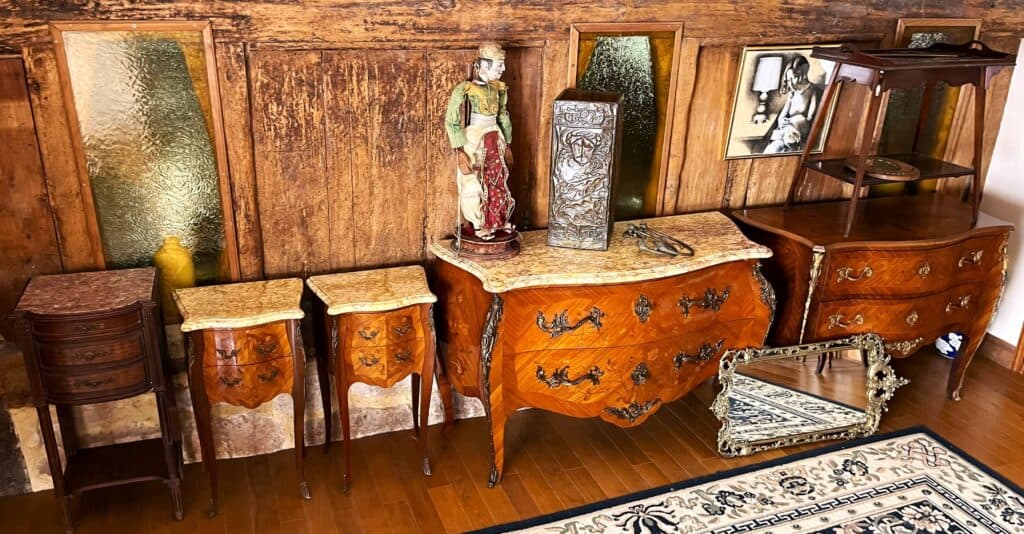Is there a difference between antique and vintage pieces? Here at Village Vintage, it’s a question we’re often asked. Although commonly believed to mean the same, there are differences between the terminology, though they’re used interchangeably. In this week’s blog post, we take a closer look and clarify the significance between the two to help you make better informed decisions when purchasing or collecting your items.
Definition and Age
The primary difference between antique and vintage lies in their age. Generally, an item is considered antique if it is at least 100 years old. This definition is widely accepted in the collectibles market and by most antique dealers. Antiques are often seen as items that have significant historical value, reflecting the craftsmanship, materials, and design aesthetics of the period in which they were made.
On the other hand, vintage items are typically those that are at least 20 years old, but not yet 100 years old. For instance, a vase from the 1980s can be described as vintage, whilst a vase from the 1890s would be considered antique.
The term vintage is often associated with a particular era or decade; ‘Mid C’ refers to mid-century (encompassing 1950/60/70's). This is the most common term referred to in association with the ‘best’ vintage period.
Historical and Cultural Significance
Antiques often carry a greater historical and cultural significance due to their age. They can provide insight into the social customs and artistic trends of their time. For example, an antique piece of furniture from the Victorian era can reveal much about the materials used and the stylistic preferences of that period.
Vintage items, while not as old, can still offer valuable cultural insights. They often reflect the popular styles and trends of a more recent past, capturing the essence of the time they represent. As an example, vintage fashion can showcase the evolving tastes and societal norms of the mid-20th century, such as the shift from the conservative styles of the 1940s to the bold and experimental fashions of the 1970s.
Condition and Quality
The condition and quality of an item can also distinguish the difference between antique and vintage pieces. Antiques, due to their age, are often rarer and may require more care to maintain their condition. They are typically valued for their originality and specifics like the patina that has developed over time, which can add to their historical authenticity and charm.
Vintage items, being newer, are often more readily available and may not require as much maintenance. However, their condition can still significantly impact their value. Pristine vintage items, especially those that are representative of their era, are highly sought after by collectors.
Market Value
The market value of antiques and vintage items can vary widely based on factors such as rarity, condition, and demand. Rare and well-preserved antiques often reach higher prices due to their age and historical significance.
Vintage items can also be valuable, particularly if they are iconic of their time or have become fashionable again; which we have certainly seen more recently. For example, vintage collections from well-known designers can be highly desirable and fetch high prices. Naturally, the value of vintage items can also be influenced by current trends and the nostalgia factor. This can drive demand for items from particular decades.
In light of this, you may have heard of the term ‘retro’ within the vintage community. It’s commonly used in place of the term ‘vintage’, however there is a slightly different meaning to them. Retro is actually a shortening of the French word, retrograde. This is where newer pieces imitate or nod to the styles of the recent past. So, if an item is listed as retro, it most likely won’t be an authentic vintage piece.
Get in Touch
Now we’ve clarified the difference between antique and vintage pieces, you can better appreciate the unique qualities and value of each type of item! Here at Village Vintage, we love what we do. We are passionate about delivering the best results for our valued customers. If you’re looking for unique vintage pieces and antique furniture, we’d love to help!
Simply get in touch with us by filling out our contact form and one of our friendly team will get back to you.






